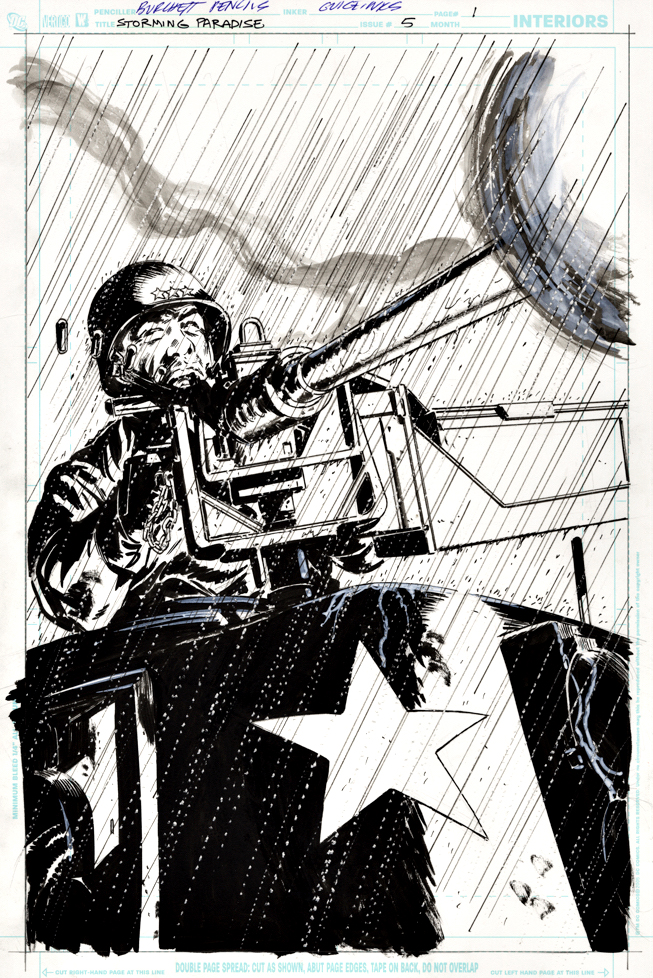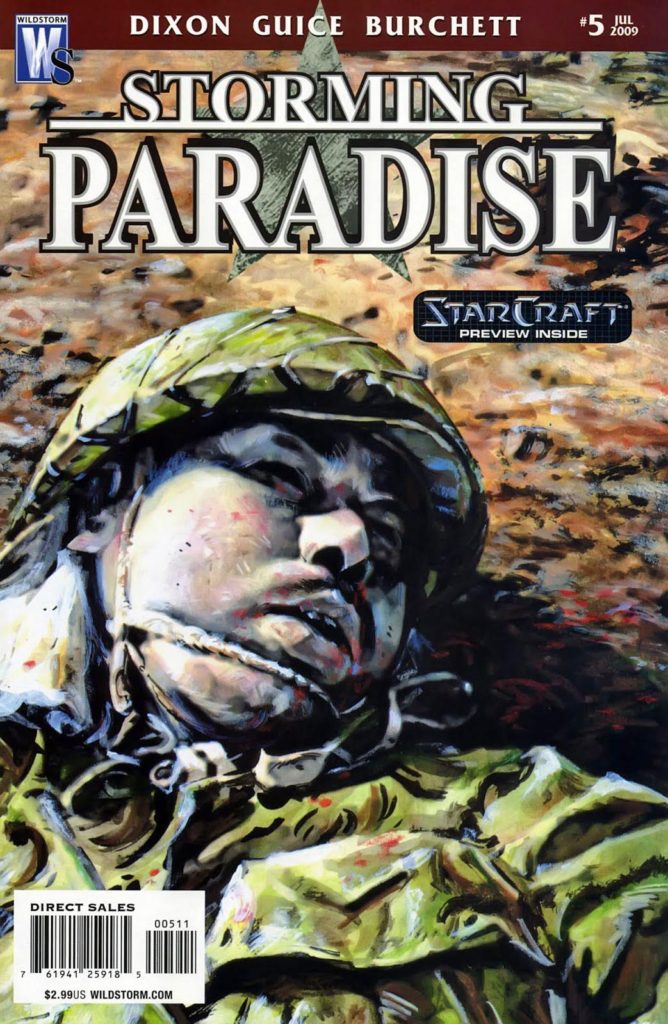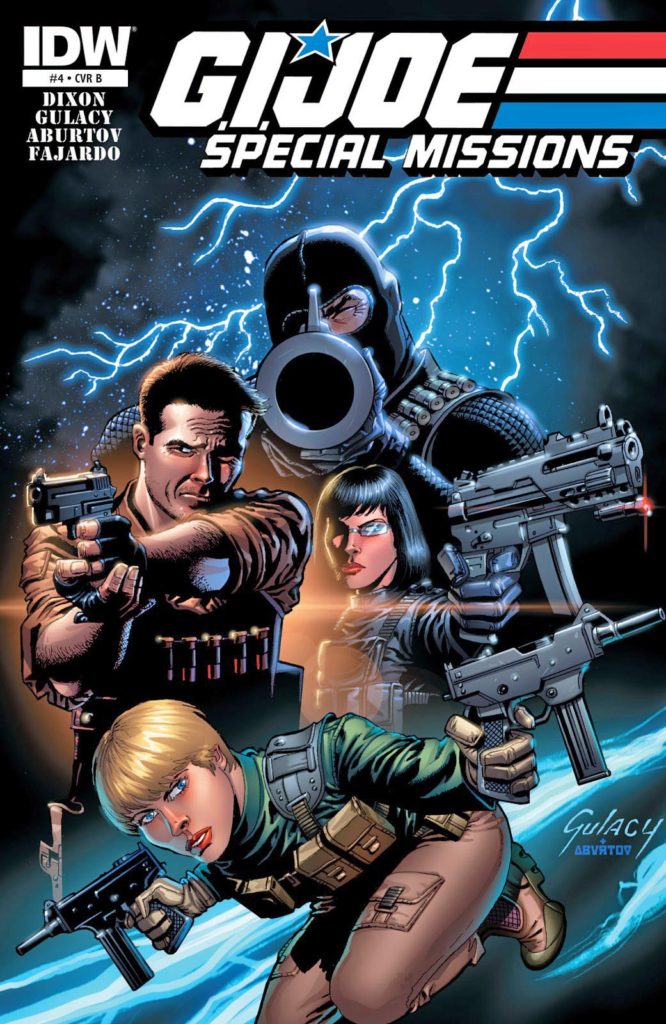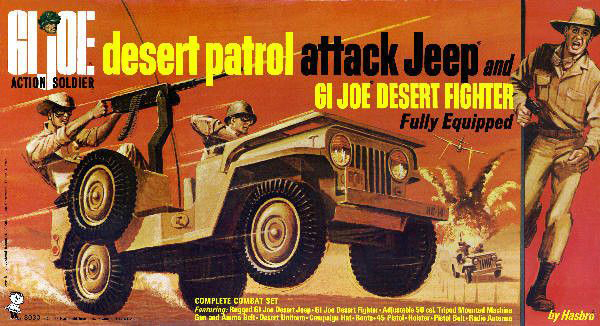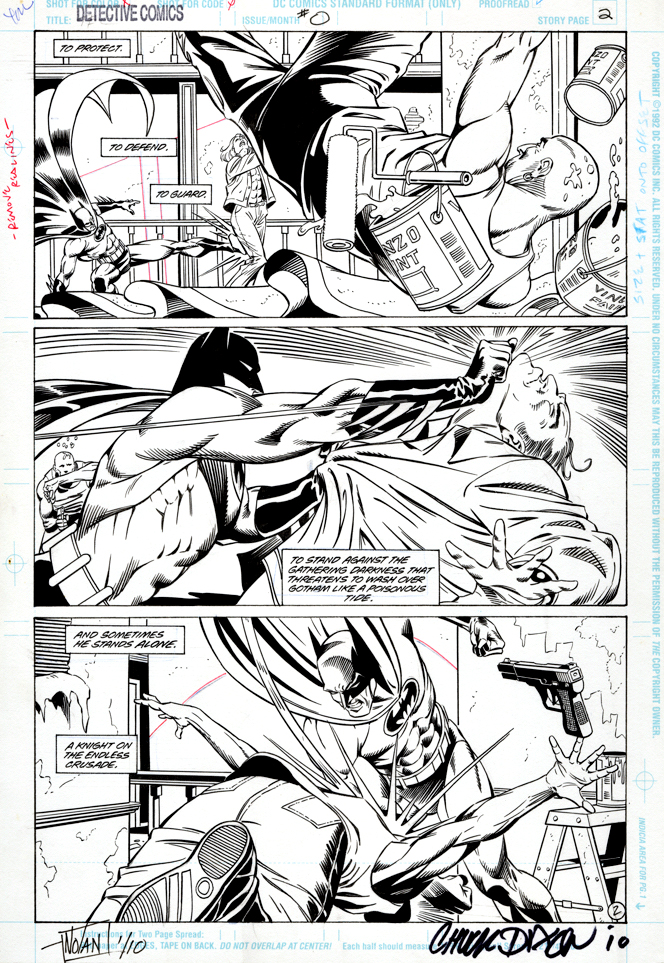Butch Guice — Alternate Vision
Storming Paradise #5, July 2009
General Patton dramatically fires on… Japanese soldiers?
In this alternate reality version of World War II, anything is possible. America’s atomic test goes horribly wrong in New Mexico, and the US is unable to produce a working A-Bomb. So the only way to attempt to defeat the Japanese forces is to invade.
Created by Chuck Dixon and Jackson “Butch” Guice the series ran into some scheduling and deadline challenges. At a minimum, there was a six-month gap between issues #4 and #5.
Hence, other artists were called in to help out. Some pages — like this one — look 100 percent Guice, and others, less so. Rich Burchett gets credits for pencils this issue but I’m guessing that many pages are rough breakdowns only.
But like I said, that’s a guess.
Guice ‘s art style has changed dramatically over the years. I enjoyed his early superhero work, but I find his contemporary “photo-realistic” style more appealing.
And perfect for a series that features the aforementioned General Patton, Harry Truman, George HW Bush and other recognizable historical figures.
Even if that history actually never happened.

